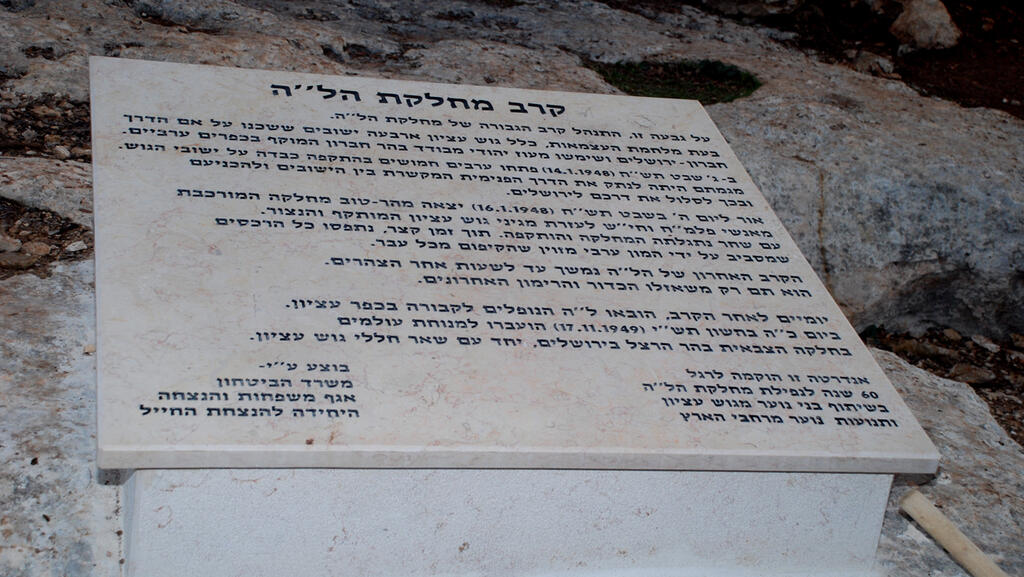Getting your Trinity Audio player ready...
A newly-revealed memo dating back to 1948 War of Independence shed light on an operation by Israeli troops carried out in revenge for the deaths of their comrades.
Documents found in military archives indicate the operation was launched to avenge the death of 35 soldiers attempting to reach the besieged city of Jerusalem. The 35 fighters were dispatched from what is now the West Bank area of Gush Etzion to Jerusalem, but were ambushed and killed on the way.
1 View gallery


A monument at the site of the battle that killed 35 fighters on their way to Jerusalem
(Photo: Yaron Rozental)
The details of the battle were unclear and only after Israel captured the West Bank during the 1967 Six-Day War did information become available, despite attempts to discover the truth repeatedly during the 19-year gap between wars.
The archive documents showed that an operation launched to prevent Egyptian forces from advancing, as well as an effort to conquer Bethlehem and Hebron, was also an opportunity to avenge the death of the 35 men.
Members of the Hagana Harel Brigade, which later became part of the IDF, located objects belonging to the slain men in villages believed to be complicit in the ambush, and from where some of the Arab forces' members came from.
On the third day of the operation, October 20, the 5th battalion of the brigade was to take the Palestinian village Bayt Nattif. The local commander then called for the engineers corp to dispatch men to blow up all of the buildings in the village after its residents were told to leave.
The documents show that the commander instructed his subordinates to inform the troops on the ground that the village housed the men who killed the 35 fighters. So, that they understand that blowing up the village was an act of vengeance.
In another village nearby, forces came upon equipment seized from the fallen troops including a backpack marked as belonging to one of them.
A member of the brigade at the time said the capture of the village prompted the Arabs in surrounding villages to flee.
Among the belongings left behind by the villagers, the Israeli forces found photographs of the mutilated bodies of the 35 men, taken by the Arabs who ambushed them.

